[ad_1]
“Checking out Historical Chicago” is a feature series devoted to the work of historical worldbuilding. The world each featured writer builds is Chicago. And yet, each writer brings Chicago to life differently, with different hammers and bricks, brushes and hands. This series approaches Chicago as a city constantly under construction: a story that is, and always has been, many.
In 1988, Kathleen Rooney’s parents drove her and her two younger sisters into the city for a weekend museum visit. A curious eight-year-old drawn to art and history, Rooney enjoyed these trips. She already sensed how vast and ungraspable time was, how many people and animals had lived on the Earth before her. Her family adored Willa Cather’s tales of pioneering across the Great Plains and Rooney, wholesomely gothic, filled her shelves with historical nonfiction on death, disease, and accidents. She repeatedly thumbed through Wisconsin Death Trip’s cataloging of bizarre tragedies around Jackson County, Wisconsin between 1885 and 1910. And her love of the natural world led her to Death in Yellowstone: Accidents and Foolhardiness in the First National Park. Rooney was a cataloger: anxious, questioning, alive to human frailty. Through books and museums, she could glimpse just beyond herself to grapple with all she couldn’t know and all she couldn’t control.
The Rooneys traveled this particular weekend to the Museum of Science and Industry. Occupying the last building remaining from the 1893 Columbian Exposition, the museum opened during Chicago’s subsequent World’s Fair: the 1933 Century of Progress. Chicago’s past and imagined future uniquely coalesced here, due not only to the building’s biography but also the museum’s melding of science with history. Rooney especially loved the exhibits that plunged visitors into past Chicago through immersive world-building. While one favorite exhibit dropped her into a relocated coal mine to experience a miner’s daily life, another guided her down a street in 1910. In this exhibit, Yesterday’s Main Street, she clopped along cobblestone streets towards a nickelodeon, where she watched silent-era stars Charlie Chaplin and Buster Keaton tell stories through delightfully impossible physical stunts.
Silent films found her on the floor below, too. Rounding a corner at the back of Lower Level 1, she came across an object that had charmed adult and child visitors alike since 1935: the Fairy Castle. Rooney imagined the castle’s inhabitants entering the great hall and passing Cinderella’s glass slippers on their way to the dining room, where they feast under tapestries depicting the Knights of the Round Table. Sated on tiny delicacies, they flit up to the library to read a handwritten volume by F. Scott Fitzgerald with feet in the air. They decide to take a nighttime stroll in the Magic Garden, drawn out by the nightingale’s song. Coming to rest under the Aladdin archway, the fairies look up and spy reindeer pulling Santa Claus across the sky.
Rooney was smitten.
Who had created this marvel, she wondered? Thankfully, the antechamber leading towards the castle provided the answer. A young woman with dark bobbed hair, heavy red lipstick, and a flapper dress dazzled from film posters.
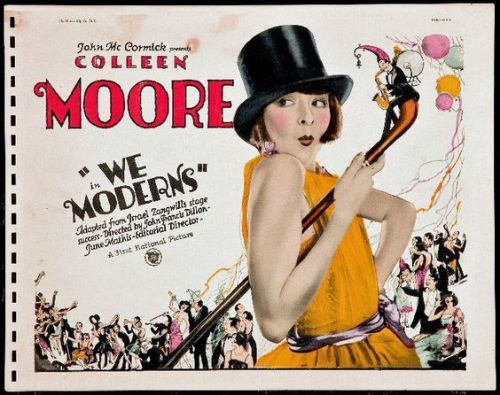
The same undeniably charming woman—older, now sporting a grown-out bob and a black Chanel suit with pearls—sat in the Magic Garden holding Cinderella’s carriage. Exhibit texts explained how this woman had commissioned around 100 people to create the one-ton castle with its 1,500 miniatures, and how her connection to Chicago prompted her to donate the castle to the Museum of Science and Industry in 1949. Before giving the castle to Chicago, though, she had taken it on a national tour, to raise the nation’s spirits during the Great Depression while raising money for children’s charities.
But her name, once the biggest draw at the box office, had slowly disintegrated along with the silver nitrate of her 60+ silent film reels: precious art neglected. Today, many remember Chaplin and Keaton—maybe Mary Pickford—when they recall silent-era Hollywood. Their films were preserved.
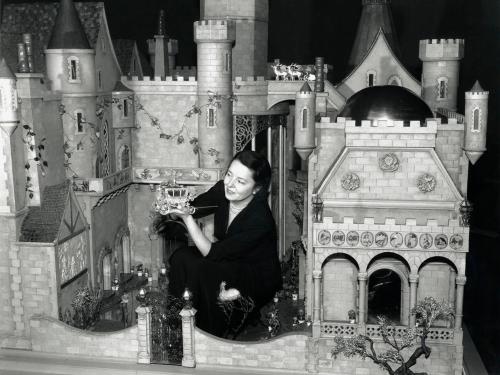
Thanks to her many childhood and adulthood visits to the Fairy Castle, Rooney would remember Colleen Moore, too. “As a girl, I was just struck by: she was a grown-up when she did this, but she was a grown-up who was very much in touch with the enchanting things of the world,” Rooney told me on a sunny Saturday in July. “It’s a monument to useless beauty, to beauty that just exists for its own sake—and in a world that is constantly trying to beat us down with ugliness. Even if I couldn’t have said so as an eight-year-old, I now think it’s an absolutely heroic statement in the face of all the forces that would tell us we have to accept a drab and unfair reality.”
Nearly thirty years after first encountering Moore and her fairy castle, Rooney began earnestly considering how enchantment can be culturally uplifting, even politically assertive. The world had become especially dark. Donald Trump had just won the presidential election and hatred poured out so thickly that she, and many others, felt drowned in it. “This is a disenchanting time to be conscious,” she recalled of that 2016 winter when the potential for individual action seemed feeble. Like Colleen Moore, she wanted to create art that could help. And help, she realized, could take the form of enchantment. “What,” she asked herself, “can I do to re-enchant myself and then maybe eventually re-enchant other people?”
She began writing something that, a few years later during the pandemic, sparked into a book. The book had been lying latent within her for years, waiting for the perfect conditions to ignite: “Everybody is full of kindling and fuel from their childhood on. Suddenly, when you’re an adult, you’re like: Why am I aflame with passion for this topic or this object that I’m seeing?” She quarantined; she dreamed; she wrote. Flitting across her new pages were fairies and magic, miniature treasures and a touring castle, silent films and stars, flapper dresses and dark bobs, and a protagonist who evoked the gutsy Colleen Moore. A childhood fascination transformed into an adult belief that magic is real, that magic balances boldly—promisingly—between great darkness and great brightness.

Longtime readers of Rooney’s fictional memoirs will recognize her down-to-the-detail charm in the resulting book, From Dust to Stardust. Michigan-born Eileen Sullivan—rechristened Doreen O’Dare in Chicago, before hopping a train to Hollywood—possesses the resourceful confidence of Lillian Boxfish, the protagonist of Rooney’s 2016 bestselling Lillian Boxfish Takes a Walk. Both characters are frank and white-haired, narrating their sensational pasts from several decades on. Both acknowledge that their beautiful art no longer exists, not in the same way, at least. Still, both find delight in having lived with eyes wide open.
Stubbornly urban, Boxfish grapples with her fading past (her bestselling books, for instance, now lie forgotten on the bargain cart outside The Strand) through frequent walks around the city. The streets are where past, present, and future collide, producing rap music that reminds her of swing music and chance encounters that allow her to envision the city beyond her lifetime:
I am not going to stay off the street. Not when the street is the only thing that still consistently interests me, aside from maybe my son and my cat. The only place that feels vibrant and lively. Where things collide. Where the future comes from.
From Dust to Stardust’s Doreen O’Dare is similarly pulled towards collisions where the future sparks into being, which she finds not on city streets but on stages. While visiting her Aunt Lib in Chicago, she attends her first play, a production of Peter Pan:
As much as Wendy and Tiger Lily and all the Lost Boys, what made an impression was my comprehension of the spell cast in captivating an audience. Equally enrapt by watching the performance and the other children’s reactions, I realized that people’s emotions are delicious to me.
When Peter Pan asks the children who believe in fairies to clap their hands and thereby save the dying Tinkerbell, O’Dare stands on her chair and screams, “I believe in fairies! I really do!” All eyes turn towards the clapping little girl screaming at the actors and, rather than be mortified, O’Dare revels in the audience’s applause, both for their belief in fairies and the future she sees emerge in that moment:
Aunt Lib’s gentle hands pulled me into her lilac-scented lap, but those fingers may as well have been the steady force of my dream taking permanent hold. An actress? No, I thought even then. I did not intend to become only an actress.
I meant to become a star.
Yes, a star is born. (The unacknowledged basis for the 1937 film A Star is Born, What Price Hollywood?, was based on Colleen Moore’s life.) And O’Dare’s rise to stardom is by turns lucky and plucky. After landing a studio contract thanks to her Chicago uncle-in-law, she travels to Hollywood with her Granny Shaughnessy. This Irish immigrant—the beating heart of the book—keeps the 14-year-old O’Dare grounded with advice like, “As long as you’re still curious about tomorrow, you’ll be okay.”
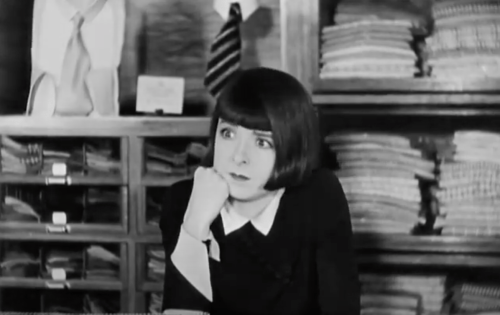
All told, O’Dare is okay in silent-era Hollywood. Men prey on pretty girls seeking moving picture fame, but O’Dare protects herself through cleverly wielded naiveté. After years of struggling to play roles other than the Irish maiden or the working girl, she eventually stars in a string of box office hits, transforming ticket sales into lucrative long-term contracts, her own production company, and total authority over her pictures. By the time O’Dare begins taking elocution lessons thanks to the unavoidable “talkies,” she makes $12,500 per week: almost $215,000 today.
This turns out to be the height of female power in Hollywood, as production companies use the paradigm shift to dismiss female stars. O’Dare, remarkably, maintains her sense of self while finding her own way to leave acting. Having collected miniature objects throughout her acting career, she starts dreaming up a Dollhouse. Why she would do such a thing is unclear. There’s no practical use for such a massive project, especially for an adult. Creating the Dollhouse, though, snaps O’Dare out of a depressive low, bringing her back to the Peter Pan-ish attitude of early Hollywood’s pioneers, of “those who had not yet lost the capacity for wonder, who could dream during the daytime, who refused to draw the line between what was real and what was possible.” When O’Dare tours the Dollhouse around to children’s hospitals, including extra pieces for the blind children to touch, her words could just as easily apply to the moving pictures which let her dream during the daytime: “Wonder usually enters through the eyes but takes place chiefly in the mind.”

O’Dare’s words could just as easily apply to Rooney’s research process, too. Much as Lillian Boxfish Takes a Walk was inspired by real ad woman Margaret Fishback, but not about Margaret Fishback, From Dust to Stardust was inspired by Colleen Moore. Moore wrote her own memoir and Jeff Codorie wrote her biography; if readers are interested in Moore’s life, those books are available. But for Rooney, fiction does something entirely different: “Something I think about all the time when I’m writing is: does this have to be done, in the sense of: is this redundant? Fictionalizing is not redundant.”
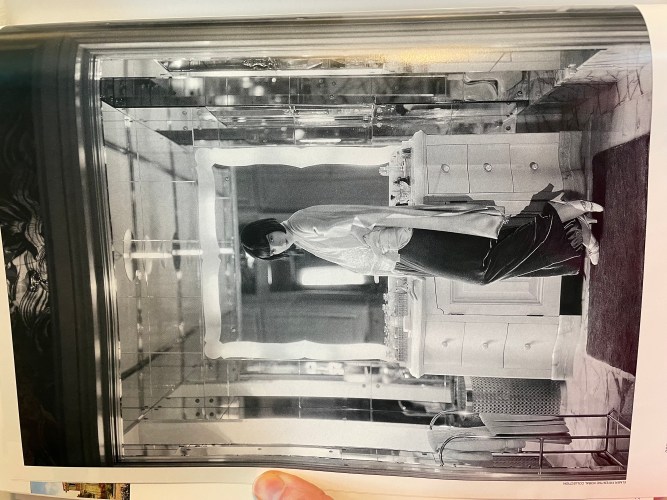
Much like the female journalist whom O’Dare confides in, Rooney sifted through numerous sources—magazines, letters, books—to responsibly imagine private, unknowable moments in the 1910s and 1920s. The result is intimately thrilling, as we, too, drink smuggled cocktails with Hollywood’s leading ladies: Mary Pickford, Lillian Gish, Marion Davies, Mabel Normand. From O’Dare’s perspective, Chaplin is a wolf preying on sixteen-year-olds and Clara Bow is a brazen sexpot with an unrefined Brooklyn accent and an unprofessional approach to filmmaking. Millionaires’ ranch parties are conceived down to the sauce at supper, and contemporary words like “whangdoodle” and “ballyhoo” capture an attitude towards life’s mess that feels spellbindingly innocent. To say this book is alive is to diminish how adeptly Rooney moves between the real and the imagined. This book is magic.
Considering how much Rooney’s research was shaped by pandemic shutdowns and film loss, From Dust to Stardust is a masterclass in imagining one’s way into historical gaps. She received a grant to conduct research at the Academy of Motion Picture Arts and Sciences (the Oscars), but their library was closed for so long that visiting California became an impossibility. To boot, the films of Moore and her cohort of silent-era stars proved chemically unpreservable. They were made with cost-cutting reusability in mind, rather than future generations. “That stinks from an archival perspective,” reflects Rooney, “but it was also permission-giving for me.” And so, she had to use her imagination: “Historical fiction is based on facts. Of course, Hilary Mantel’s whole career wouldn’t exist if all the intrigue in England didn’t happen. But she’s imagining so much. Past a certain point, you have to load up on your research and then just let it go and say: I can’t possibly know everything, and that’s actually fine.”
A central way she balanced loading up on research and accepting her subjects’ unknowability was through her love of museums. Museums are intellectual and physical, educational and electric. They are knowledge-filled rooms that leave space for more questions, more stories. “They are like books—you can read them but with your entire body,” Rooney replied when I asked what role museums play in her writing process. “Almost every museum has at least one thing that could blow your mind and take you down the path of a riveting story, real or imagined.”
Similar to her 2020 fictional memoir, Cher Ami and Major Whittlesey, From Dust to Stardust is a testament to the storytelling power of museums in Rooney’s work, to how she sees fiction enriching and folding into the stories museums can tell. In Cher Ami, a homing pigeon narrates her life story from inside a glass case at the Smithsonian Institution’s National Museum of American History. She is suspended in time, dead but present to the visitors who read the plaque underneath her display and respond, “Huh.” An illustrious urban museum also provides From Dust to Stardust’s narrative framework; here, at least, the audience is engaged. Now a retired investment banker, O’Dare sits in the Museum of Science and Industry basement next to her Dollhouse. Across from her sits Gladys, a museum employee who asks questions and records them so that future Dollhouse visitors can learn about its history and nuances. Children visiting exhibits play in the background, and O’Dare can smell the plastic scent of the Mold-A-Rama machine making tiny replicas of her Dollhouse for children to take home. O’Dare tells her story to Gladys and, by proxy, to the children in the adjoining rooms, and their children, too. O’Dare’s—and Moore’s—films were lost, but her voice survives.
In this way, From Dust to Stardust gathers together the storytelling spaces of films, museums, and novels to embrace the unknown, unseen audience of the future. Rooney was fascinated by how the best silent film actresses of Moore’s day managed “to push through the screen and somehow get their personality and their voice, even though they’re silent, into the heads and hearts and eyes and ears of mystery audiences.” She hopes that her book will do the same. Writing, she notes, is also a practice of believing that someone will be there, watching and listening to what you have to say even after you’ve stopped speaking. Isn’t that what magic is, after all: finding others in silence?
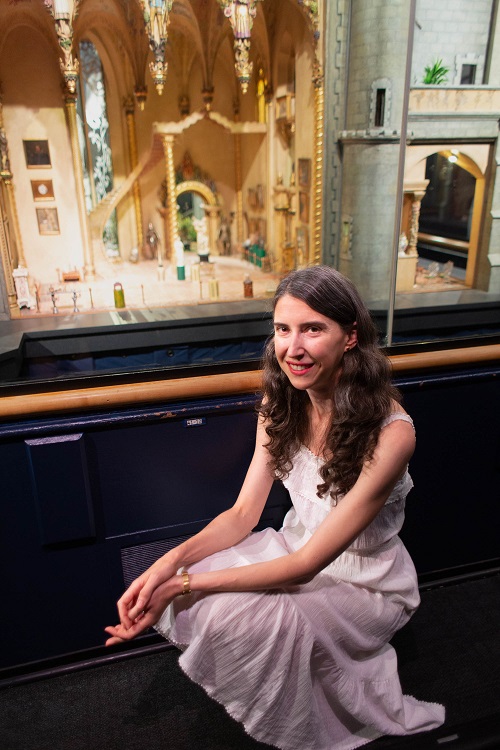
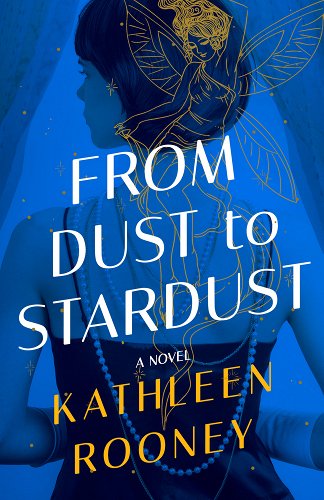
FICTION
From Dust to Stardust
By Kathleen Rooney
Lake Union Publishing
Published September 5, 2023
For a list of September events in the Chicago area celebrating From Dust to Stardust’s release, please visit the Events page on Kathleen Rooney’s website. On January 27, 2024, Rooney will be reading from and discussing the book at the Museum of Science and Industry, the home of Colleen Moore’s Fairy Castle.

[ad_2]
Source link

